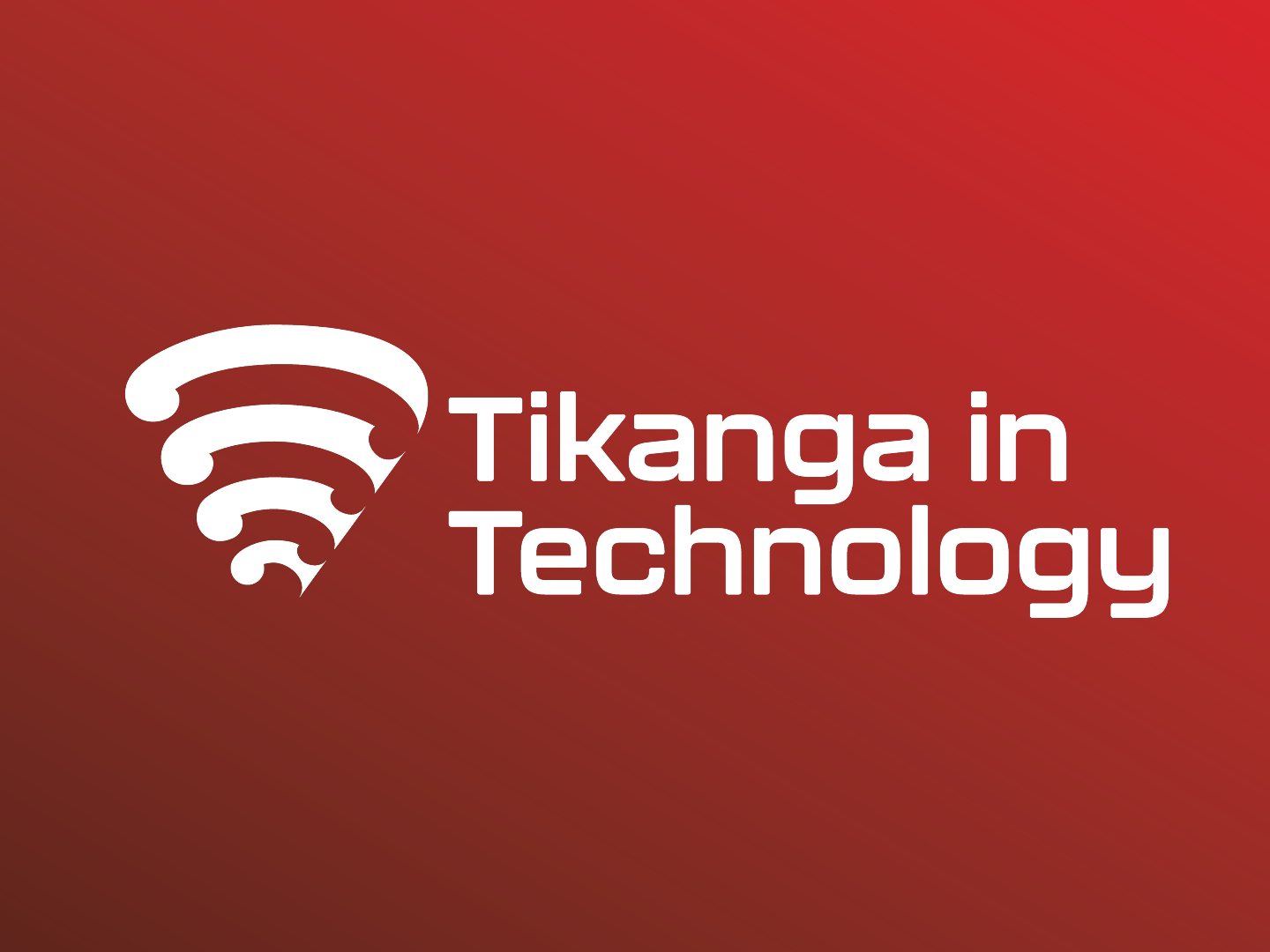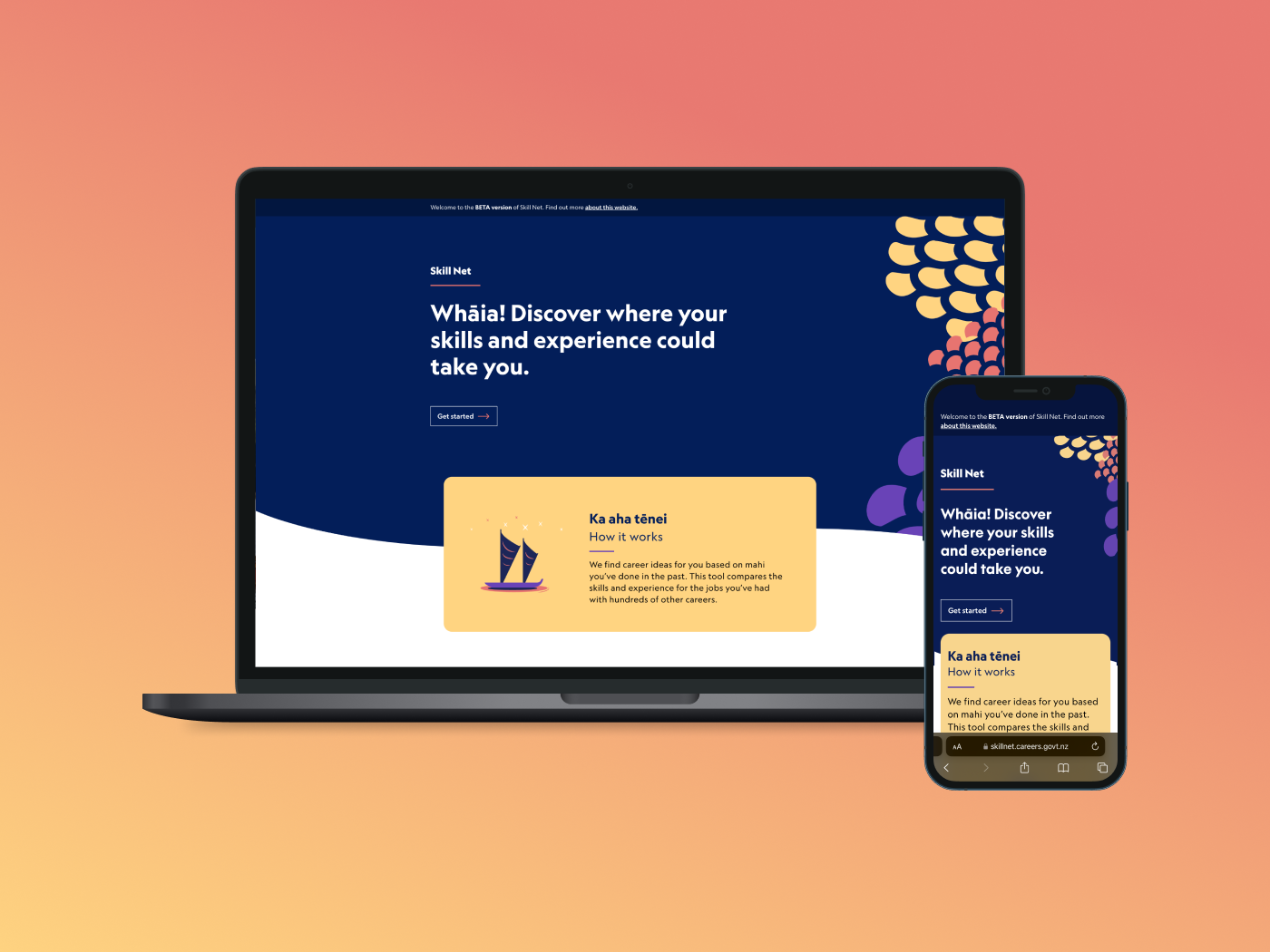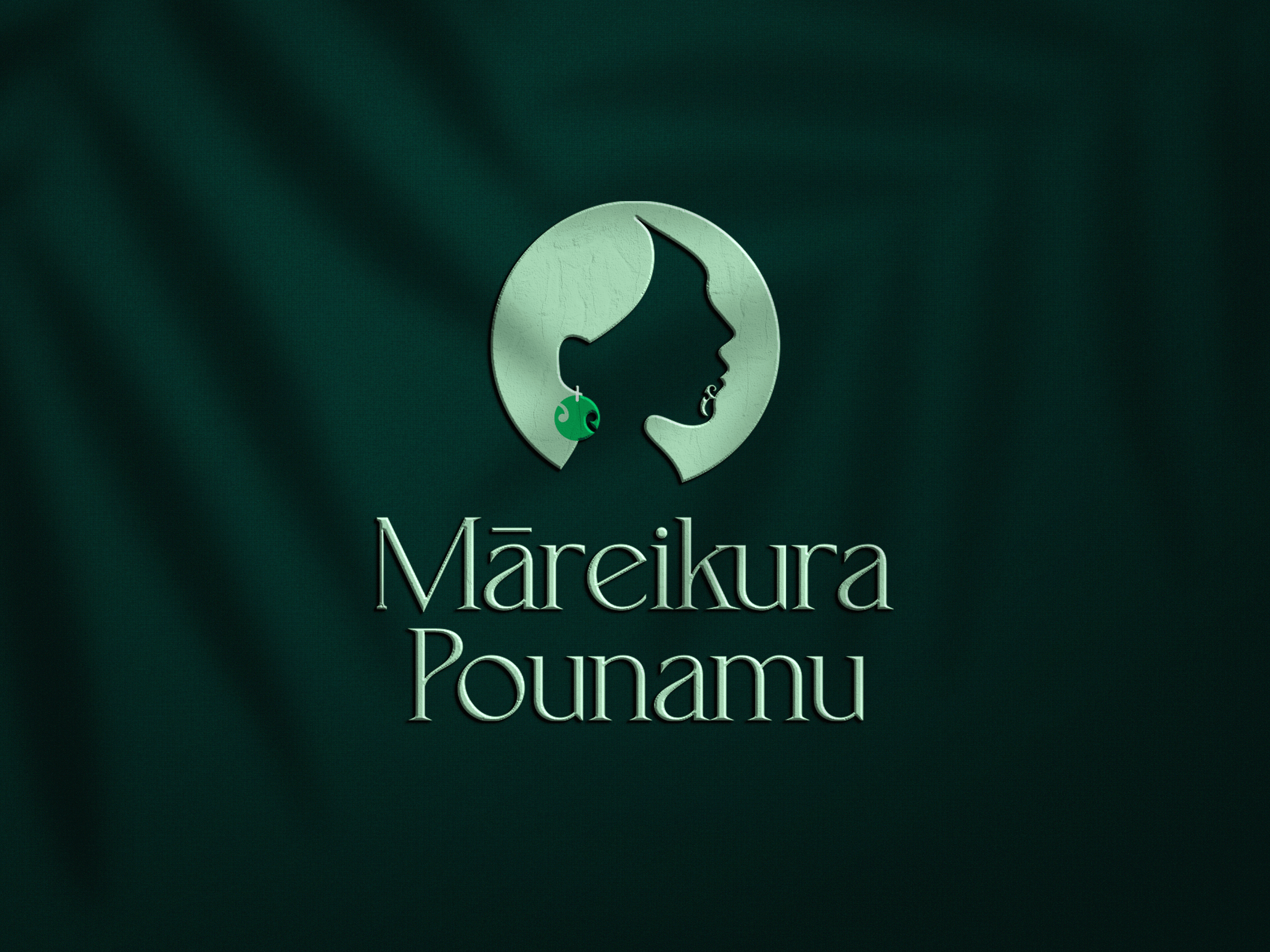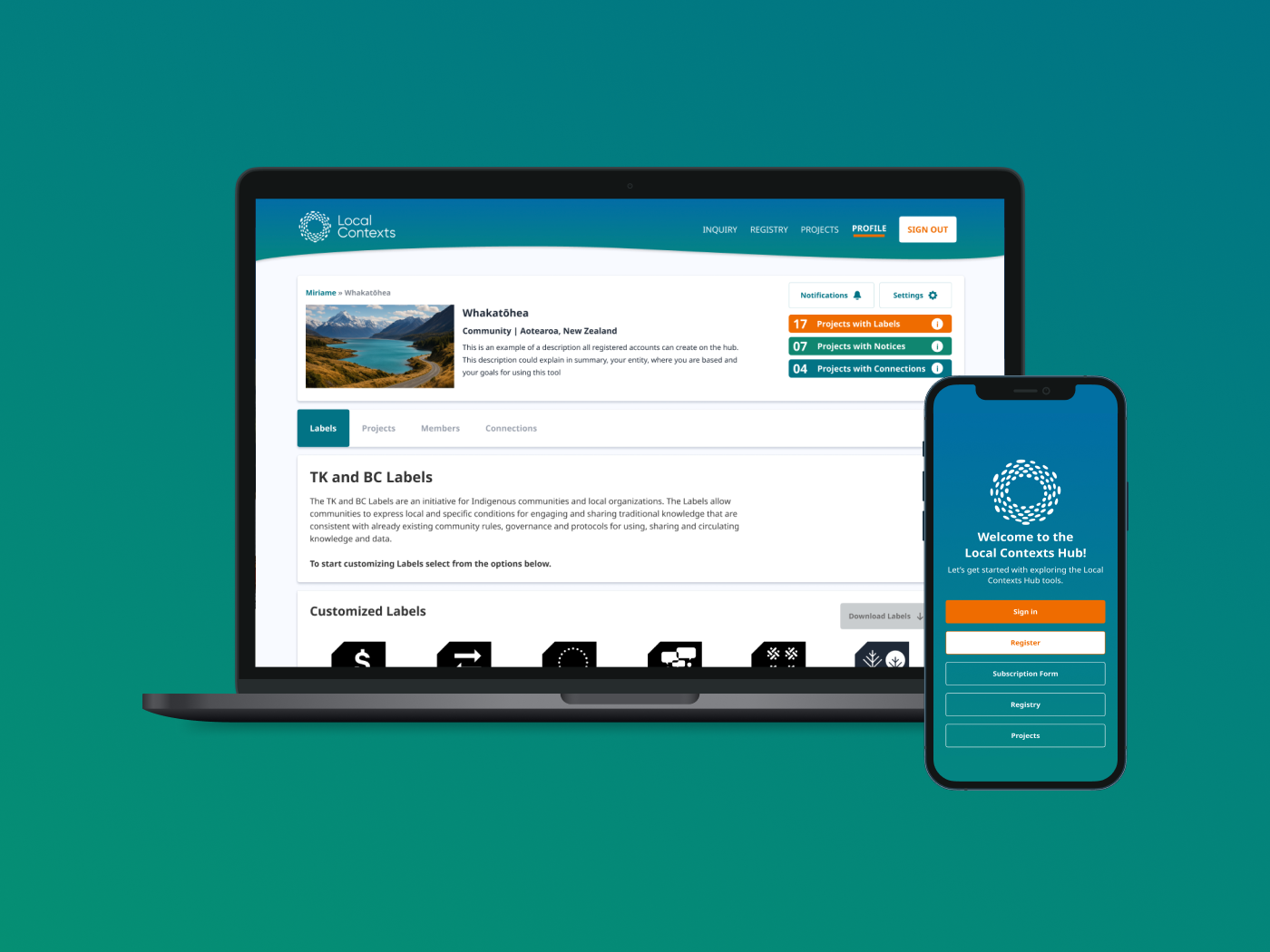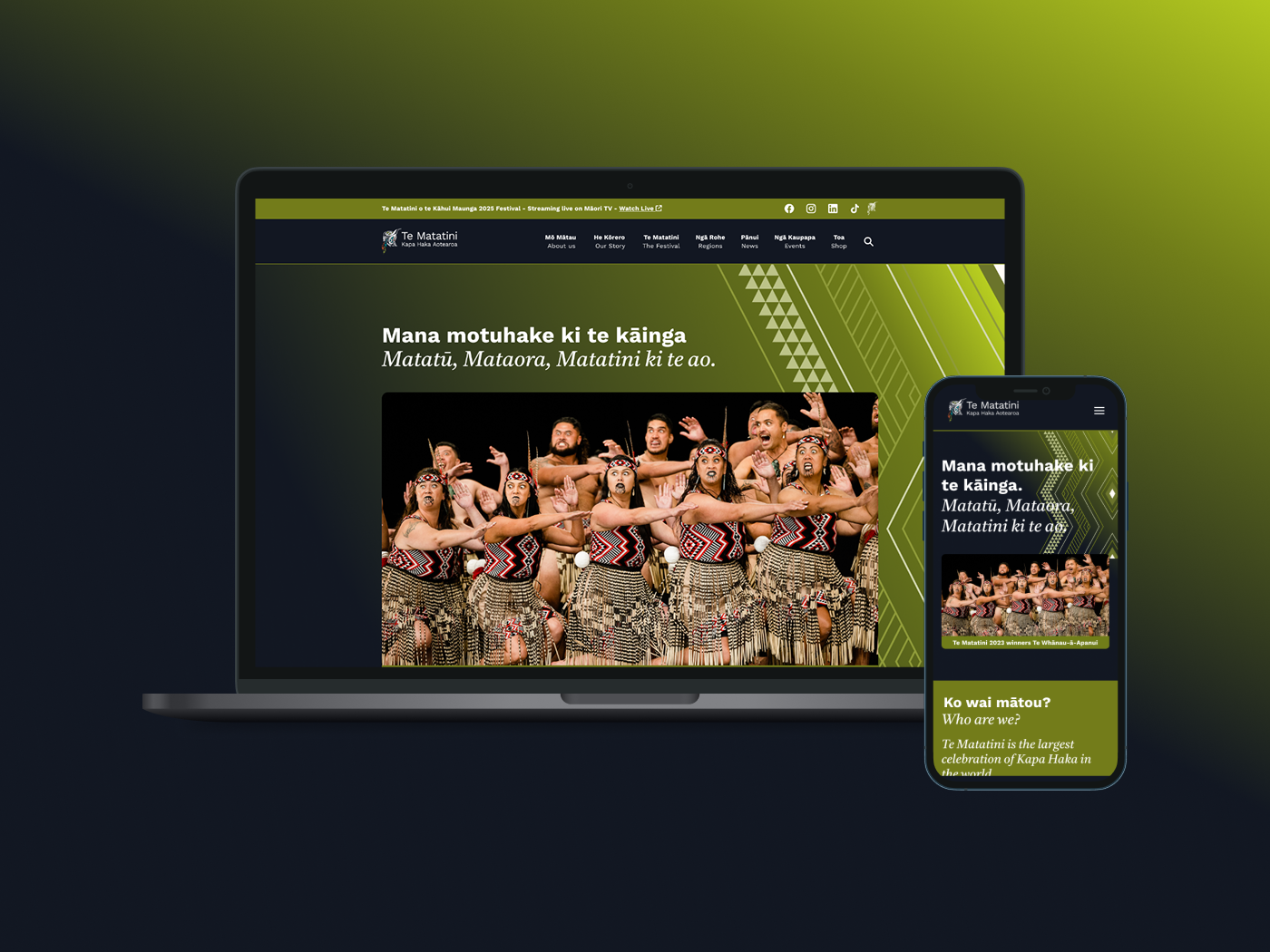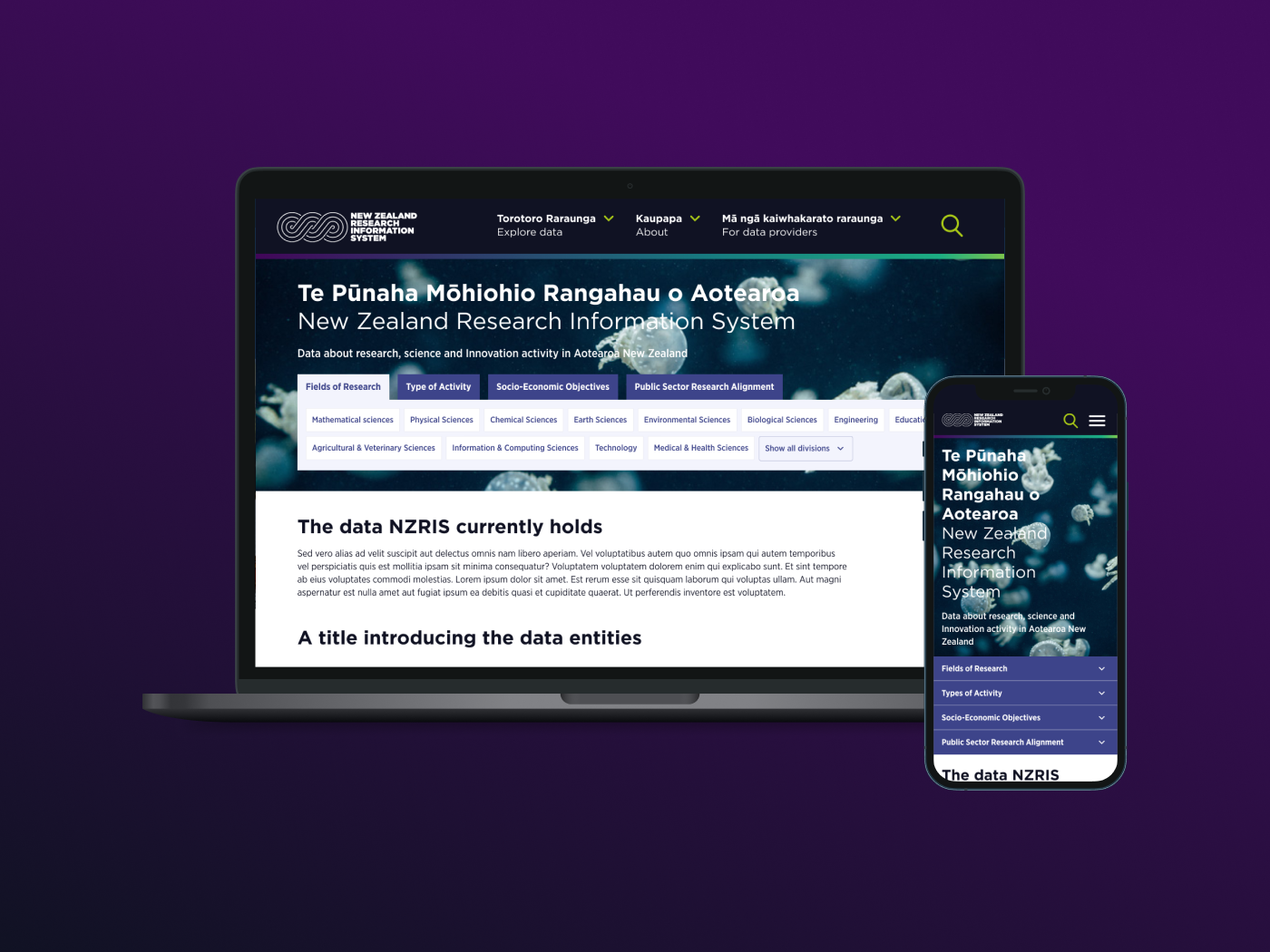Abundant Intelligences
Abundant Intelligences is dedicated to empowering Indigenous communities worldwide by expanding their knowledge of artificial intelligence (AI) to develop culturally grounded AI systems that celebrate the abundance, diversity, and richness of Indigenous cultures.
Role: Design Lead
Tools: Figma, Figjam, Google Surveys
Timeline: 12 months
Deliverable: Visual Identity
Type: Agency project
With Indigenous Design and Innovation Aotearoa (IDIA), we collaborated with the design team at Abundant Intelligences to create a global visual identity that can be adapted to reflect each Indigenous research pod's unique story. This co-design process included the Haudenosaunee Pod (Kanien'kehá:ka), Niitsitapi Pod (Blackfoot), Hiringa te Mahara (Aotearoa), Wihanble S’a (Lakota Tribe), and Ka Hawai‘i Pae ‘Āina Pod (Hawai'i).
Challenge
Our challenge was to create a visual identity that honoured the richness and diversity of the Indigenous communities involved in the program—one that could grow alongside them, now and into the future.
As an Indigenous designer, I felt a deep responsibility to ensure each community was represented with care, respect, and authenticity, we brought our own culture-centered design framework to the forefront—sharing our methods for engaging with Māori communities and introducing our international collaborators to Indigenous-led approaches to design.
I took measures within the project to ensure we worked in partnership with each indigenous community, involved them in decision making and ensured their traditional knowledge was protected and respected.
We also recognise that, while we bring Indigenous perspectives, we do not represent all Indigenous nations. Throughout the process, we were intentional about creating space for each community to lead and express their stories in ways that were meaningful to them.
Ideation
This is a glimpse into the earlier concepts we designed and tested with our studios. We were working towards designing a dynamic, transformative logo responsive to diverse Indigenous worldviews. We reflected on traditional indigenous art forms such as rāranga, beadwork, quillwork and tapa, we reflected on the deep relationships Indigenous communities hold with the land, sky, and each other. We wondered what if we could weave a new kind of digital tapestry. One that’s rooted in Indigenous history and celebrates our diverse ways of living alongside the environment. One that could assist in the exchange of knowledge from generation to generation.
Global Visual Identity
This visual identity draws inspiration from the art of weaving—a practice deeply embedded in many Indigenous cultures and used as a visual record of living in harmony with the environment. Honouring this tradition of storytelling through pattern, we developed a global logo composed of 21 modular tiles, each representing the abundance and distinctiveness of the Indigenous research pods involved in the program. As the program grows, the logo is designed to evolve—welcoming new tiles that reflect the identities and contributions of future pods.
Icon
The use of the initials "ai" is a deliberate reclamation, reimagining what AI can mean within Indigenous contexts. It invites the development of an 'ai' that is guided by Indigenous values, voices, and knowledge systems.
Each tile replicates the flora and fauna that have enriched each of our lands, combined with technology we’re embracing and improving to be more responsive to Indigenous communities' needs and aspirations.
Colour Palette
Our color palette draws inspiration from nature - showcasing the vibrant yellows and oranges of the sun that warm our souls, to the blues that purify our waters, to the greens that protect our earth, and to the purples that illuminate our nights. Together these vibrant colors invite feelings of vitality and abundance.
Co-designing with Indigenous Research Pods
As we developed the global visual identity, we engaged each research pod, inviting their insights and leadership to shape their own unique logos and narratives. Through open dialogue and deep listening, we gathered feedback on the overarching concept and explored the specific symbols, stories, and living elements they wished to highlight.
Following these conversations, we divided the design work among our team of four and began ideating individual tiles that reflected each pod’s identity. This process involved collaborative workshops, in-depth research, and ongoing feedback to ensure each design was not only endorsed—but genuinely embraced—by the pods themselves.
Refinement
We felt privileged to have been a part of these conversations and grateful for the pods and community members who not only shared some of their stories with us but also trusted us to create these designs, especially as people who are not a part of these communities.
Each pod had the freedom, time and space to showcase their own narrative through colour, art style and storytelling. Each logo took its own journey and approached this project differently engaging with their own community members, facilitating workshops and creating spaces for their members to imagine their digital tapestry.
As designers we brought to life their stories in digital form. We customised each logo to suit their artistic style and we created a library of tiles for each community to share amongst their family and strengthen their knowledge of their history.
Final Comments
As an result we didn't design just one logo, we designed five. We transformed the course of graphic design. Carefully crafting a visual identity thats guided by Indigenous storytelling and delivered with respect and care.
This is just the start of many logos that will be created over the course of the programme. We are so grateful to each person, community and expert that came on board to make this visual identity rich in knowledge and rich in abundance. Stay tuned for more logos!
Interested in hearing more? Follow this link to watch our interview on this visual identity
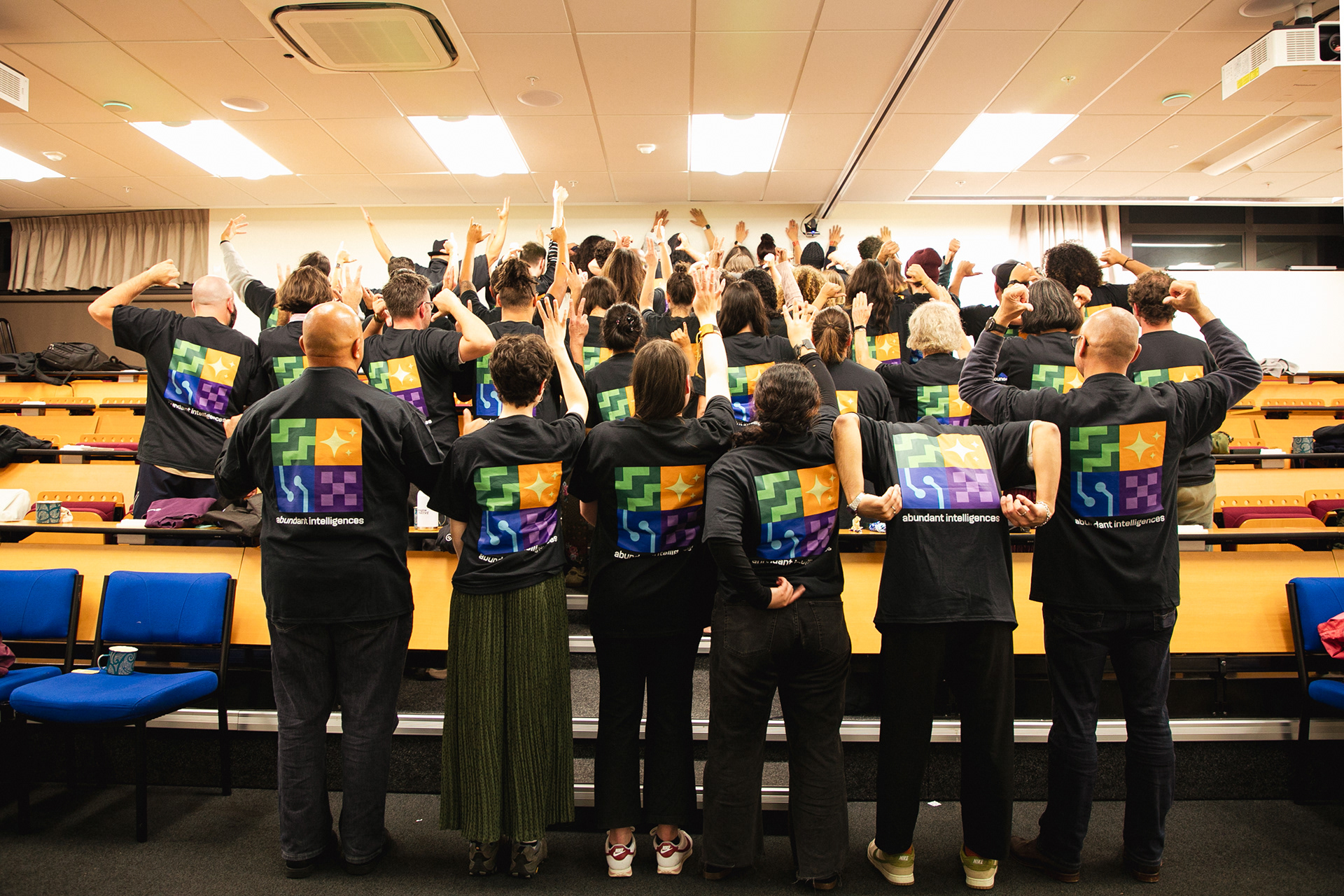
Collaborators
Tarcisio Cataldi
Julia Fortin
Kimiora Whaanga
Indigenous Communities
Haudenosaunee Pod (Kanien'kehá:ka)
Niitsitapi Pod (Blackfoot)
Hiringa te Mahara (Aotearoa)
Wihanble S’a (Lakota Tribe)
Ka Hawai‘i Pae ‘Āina Pod (Hawai'i)
Directors
Jason Edward Lewis
Johnson Witehira
Client
Concordia University
Abundant Intelligences
Agency
Indigenous Design and Innovation Aotearoa (IDIA)



